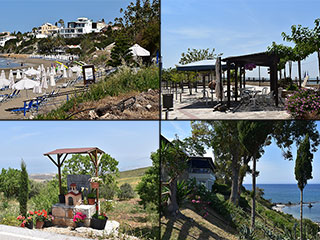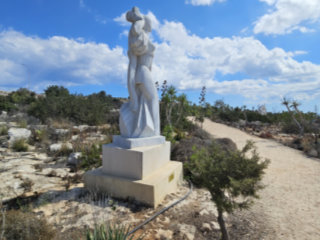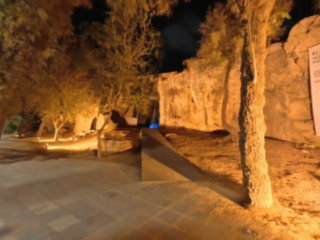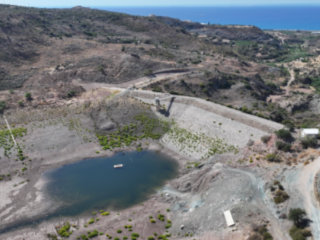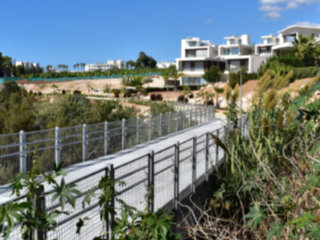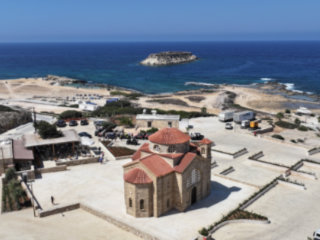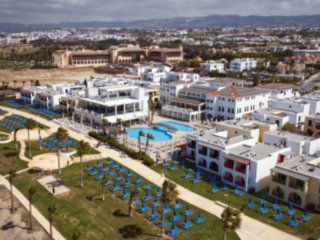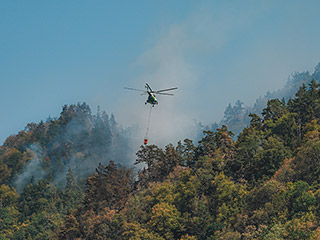The Houses Of Aion And Theseus
Baby Dionysos
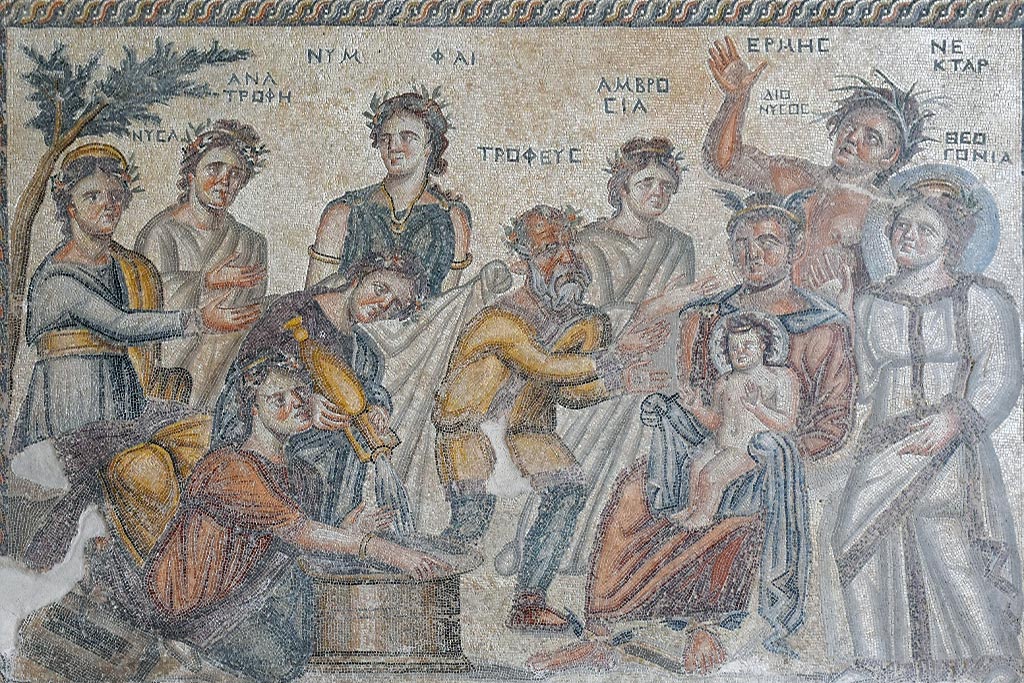
1. Starting from the upper right row, baby Dionysos is presented sitting on Hermes’ lap. The latter is about to hand him over to old Tropheus, a Selenos and his future teacher, and to the nymphs of Mount Nysa, who are preparing his bath. Near the bath the personifications of Mount Nysa and Anatrophe are shown. The young god is accompanied by three personifications: Theogonia, Nectar and Ambrosia.
Spartan Queen
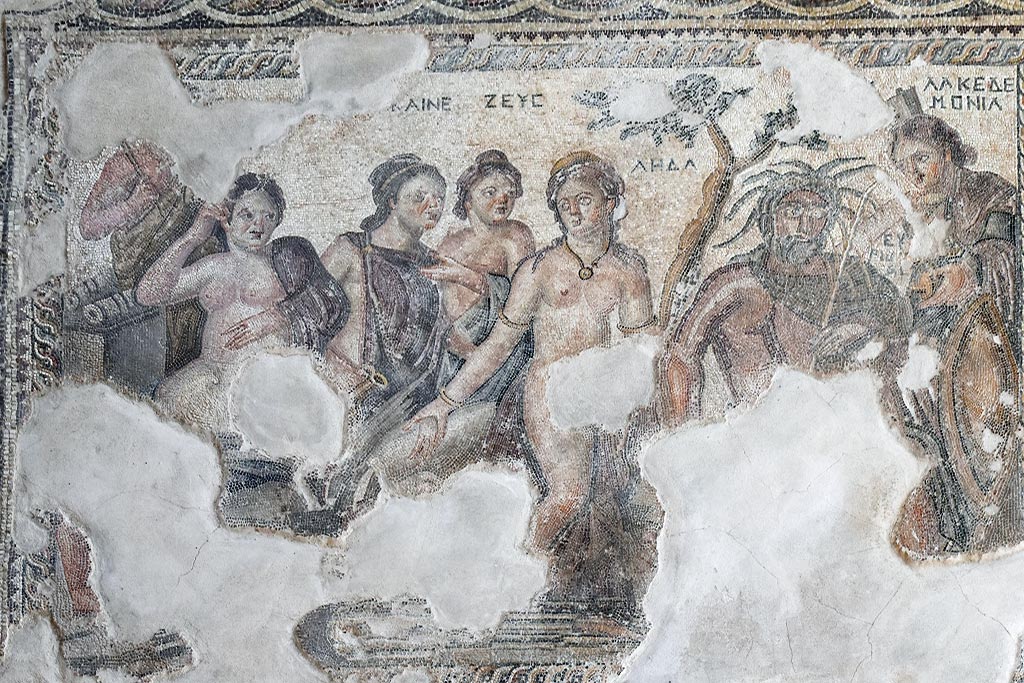
2. The panel on the upper left shows Leda, queen of Sparta, ready to enter the river Eurotas for her bath. Zeus, who transformed himself into a swan, approaches. The scene depicts the personifications of Eurotas and Lacedaemonia (Sparta).
Beauty Contest
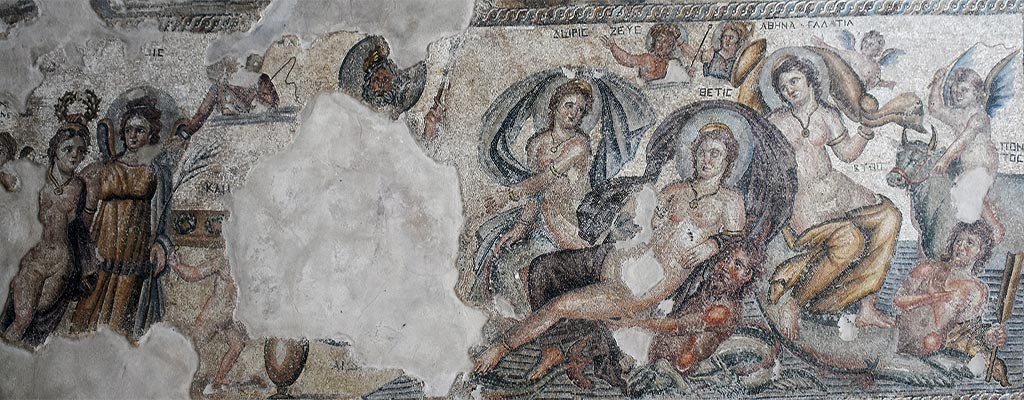
3. The central panel is composed of two scenes: one takes place on land, while the second in the sea. In the centre of the panel, Aion, God of eternal time (from whom this building took its name) presents Cassiopeia, winner of the beauty contest. The young winner reveals her beautiful body to the judges while she is crowned by the winged goddess Krisis. A young boy, the personification of Time, gives the lucky lot to Cassiopeia. In the sea scene, three of the fifty daughters of the King of the Sea Nereus (Thetis, Doris and Galatea), are depicted as dissatisfied with the outcome of the competition. The girls are sitting on the backs of Bythos (Sea Depth), a sea centaur, and of Pontos, a young triton who personifies the sea surface. A sad Eros (Cupid) is sitting on a bull, while Zeus and Athena are saluting the winner Cassiopeia at the top of the scene.
Deadly Contest
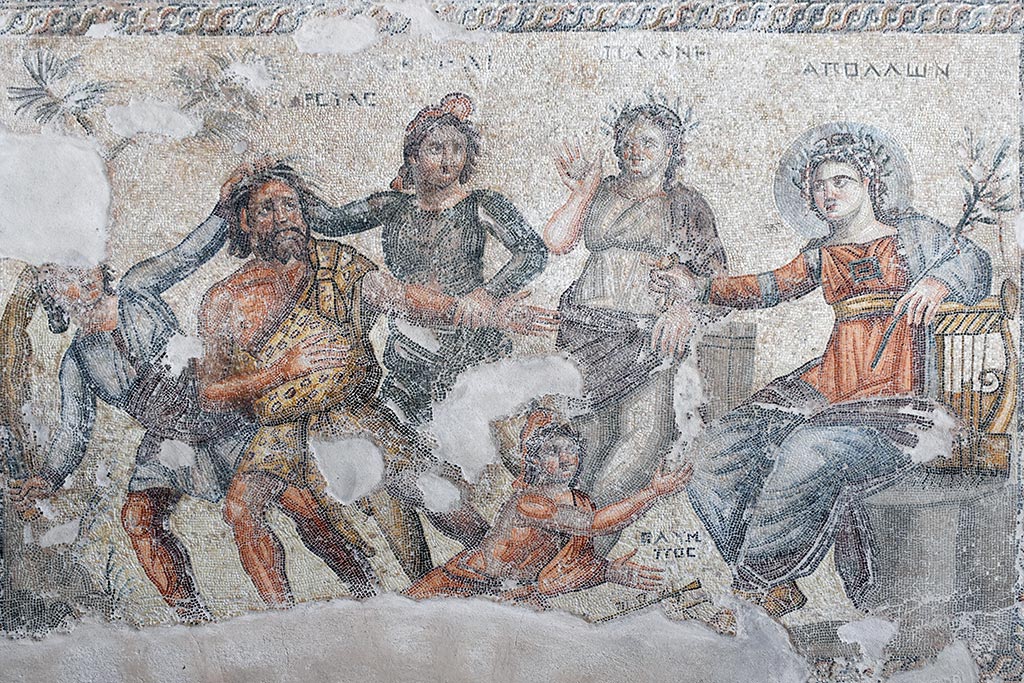
4. The lower right panel depicts a music competition between the flute player Marsyas (piper), a Selenos, and Apollo, God of the arts, patron of the Muses and a magnificent lyre-player. After being defeated by Apollo, Marsyas is sentenced to death for daring to challenge the god. Apollo is shown seated on a rock, next to a female figure bearing the inscription Plan (Delusion). Two Scythians carry out Apollo’s order. Marsyas looks pleadingly towards Apollo. In front of the god’s feet, Olympus, his young student, begs the god to show mercy.
The Procession of Dionysos
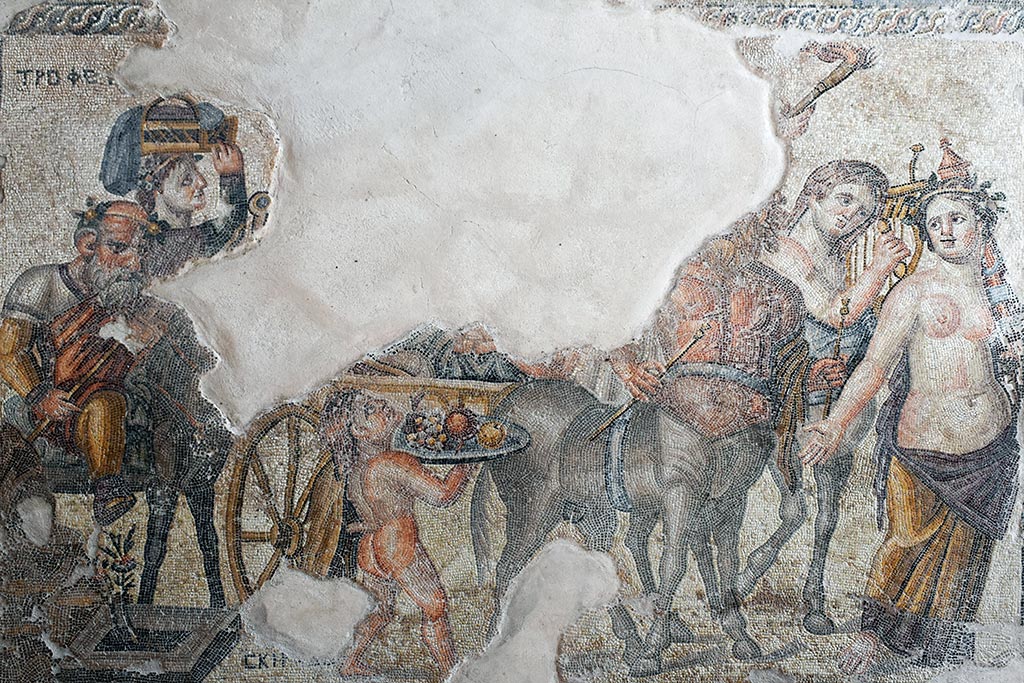
5. The lower left panel depicts the Triumphal Procession of the god Dionysos through the world. Dionysos rides on his chariot, which is drawn by two centaurs, holding a lyre and a flute. A half-naked Maenad leads the procession, while a young satyr, in the centre of the panel, offers fruit to the god. The chariot is followed by Tropheus, the god’s tutor, and a girl with a basket on her heard. Today, only Dionysos’ hand is visible holding a torch as well as his crossed legs. This scene here differs from other Dionysiac processions since it is presented as a serious ceremony where drunken satyrs and dancers in ecstasy are absent.
That's it for our look at the mosaics of Aion and Theseus. In the next blog we will head north towards the main designs, in the House of Dionysos.
Page 5 of 5


Related Blogs:
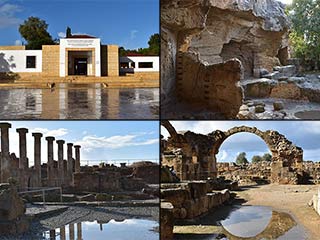
Paphos Archaeological Park - Summary
We first blogged about the Archaeological Park a couple of years ago. It was a short blog, and focused mainly on the pretty spring flowers. Now we are returning, to give the rest of the park the attention it so richly deserves.Good Pages To Visit
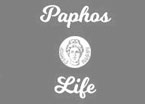
FB PagePaphos Life on Facebook
Like us on Facebook and stay notified of new blog posts.

FB PageOur Facebook Chat Group
Paphos Chat has been created for people who like our site and want to chat using Facebook. You can also easily upload photos of any size here. A lot of people are members of the Facebook chat group and the main forum. It's entirely up to you.
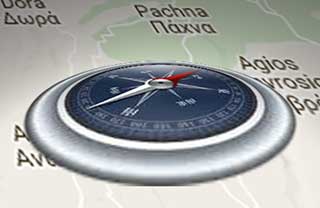
ListBlog Locations
Planning a day out? Then use our map of blog locations as a handy guide. Some of the places we visit our closer to each other than you might think, so take a look and start planning your next adventure...
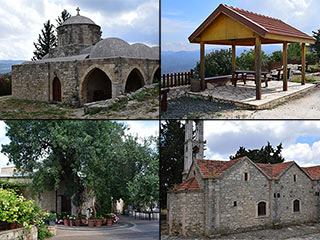
eBookCyprus Road Trip 01: the Kathikas - Panagia Loop
Let me take you on a journey around the region of Paphos, Cyprus. Starting at Paphos itself, we travel to Akoursos, then Kathikas, Kritou Terra and Simou. We continue past Lasa and Kannaviou, before taking in the delights of Panagia. Getting a bit more adventurous, we visit the abandoned villages of Statos and Agios Fotios, before passing through Choulou, Letymbou and Polemi, and rejoining the main Paphos - Polis road.
The route is suitable for all types of vehicle, and requires no off-roading. The guide contains about 130 photographs including shots of all the road signs you need to pay attention to, as well as some of the highlights you may experience along the way.
There are also several maps which will help you keep your bearings.
You can do this journey in a day, or you can break it up into chunks. You can also do it in reverse, to get some completely different views. It is entirely up to you.
